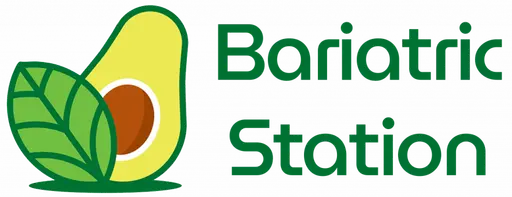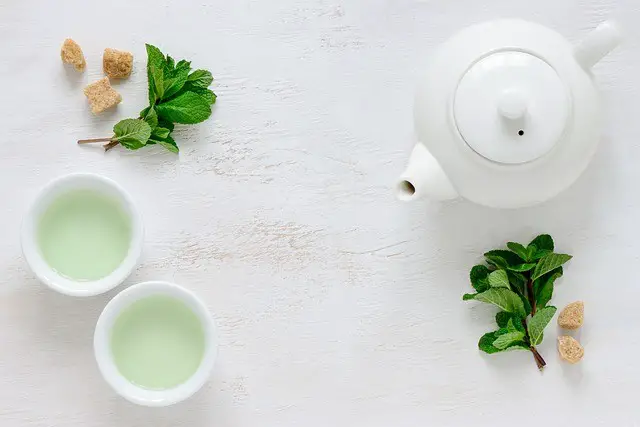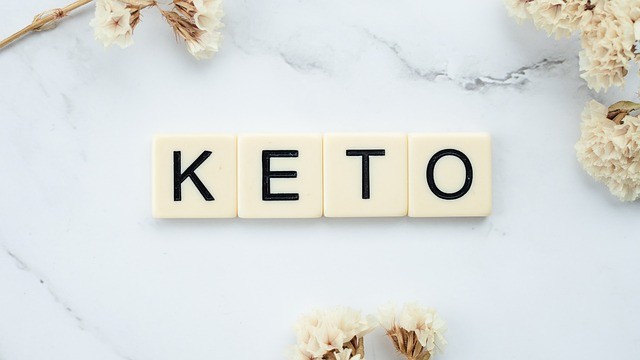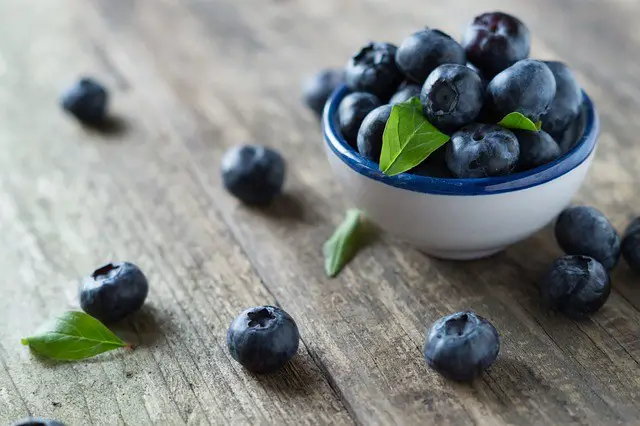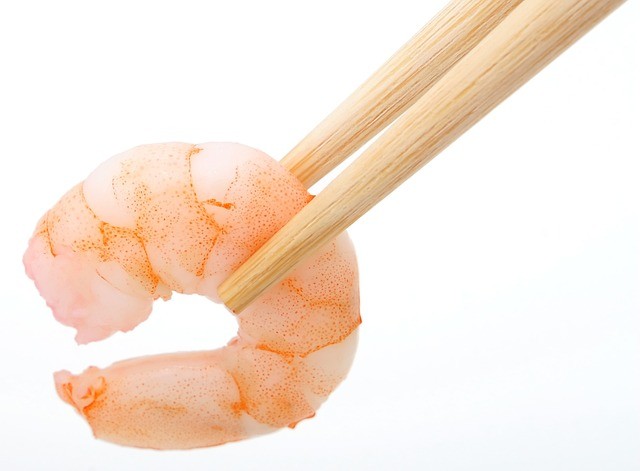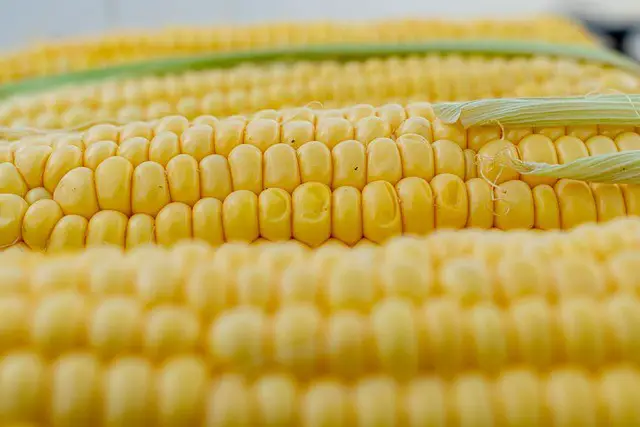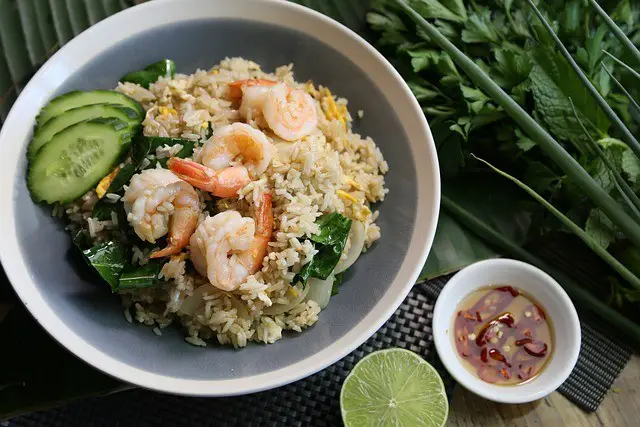Green tea does not need any hype, because it has been in the headlines and the spotlight since time immemorial. It has been labeled the “golden key” to many health benefits like weight reduction, reducing the risk of chronic diseases, and promoting cognitive function.
High blood pressure or hypertension is also not a new term to us all. It has been an ongoing “silent killer” for years, causing an increased risk of developing heart disease, heart failure, and stroke. The sad truth is, the rates at which high blood pressure is spreading are alarming. We’re now in search of natural remedies for hypertension and more efficient solutions to manage it.
You may know the health benefits of green tea in weight loss and promoting mental and cognitive well-being, but are you aware of the effects of green tea consumption on blood pressure? No? You’re in luck! Today we will be answering the question, is green tea good for blood pressure?
Does Green Tea Raise Blood Pressure?
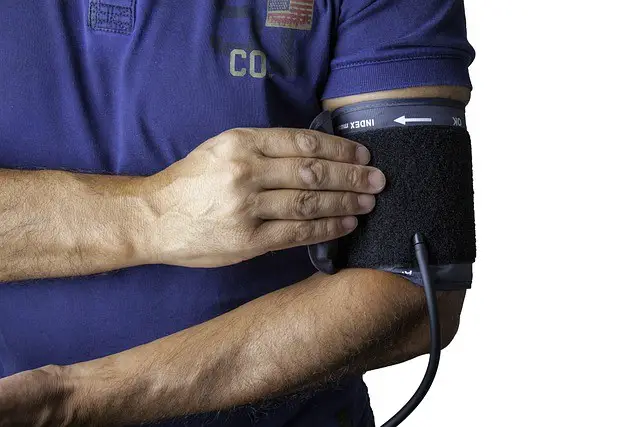
It is not a surprise that you are asking yourself, is green tea good for blood pressure? Considering that caffeine is a central nervous system stimulant, most people are concerned that beverages can raise blood pressure.
Green tea does not raise blood pressure. First, it contains less caffeine than coffee and other beverages. You will get only 30-50 mg of caffeine in an 8-ounce serving of green tea, depending on the variety of tea, processing, and brewing duration. Compared to coffee with 102-200 mg of caffeine, green tea is almost insignificant.
Some research has shown that caffeine intake can increase blood pressure by increasing arterial stiffness. Although comparing drinking green tea and coffee drinking, you will get a lower dosage of caffeine and a higher dose of catechins from green tea intake. Because of this, the positive effects of catechins outweigh the negative effects of caffeine, thus the significant reduction in blood pressure on green tea intake.
Is Green Tea Good for Blood Pressure?
Now that we know that green tea does not raise blood pressure, let’s find out if it has any positive effects on your blood pressure.
Green tea intake is widespread worldwide with most celebrities and famous cookbooks singing its praises. Green tea consumption is associated with weight loss, improving associated metabolic risk factors, and a significant reduction in blood pressure.
A meta-analysis of green tea on anthropometric measurements showed that green tea catechins consumption significantly reduced body mass index (BMI). This would be a good dietary approach for obese adults to manage weight and lower the risks of developing hypertension.
A meta-analysis of 13 randomized controlled trials showed that green tea consumption lowered plasma low-density lipoprotein-cholesterol and total cholesterol concentration. Green tea intake significantly reduces systolic and diastolic blood pressure in low-dose green tea polyphenols, when caffeine intake was reduced and when tea consumption was long-term.
Green tea contains flavonoids, in greater amounts than black tea that help control blood pressure. It also contains tannins and catechins with antioxidant properties that help reduce oxidative stress and inflammation.
So, the answer to is green tea good for blood pressure is, yes it is! But what is in it that makes it good? Do you want the long answer or the short answer? We both know I’ll give you the long answer. Understanding how green tea works to lower blood pressure will explain whether it is good for blood pressure.
How Does Green Tea Work to Lower Blood Pressure?
Drinking tea is good for lowering high blood pressure thanks to the polyphenols and flavonoids in tea. Green tea and black tea contain antioxidants that reduce inflammation and oxidative stress-reducing blood pressure levels.
Green tea catechins, especially EGCG, relax the smooth muscle lining blood vessels contributing to the blood pressure-lowering effects of green tea. The antioxidants in green tea also decrease inflammation of the smooth muscle of blood vessels’ walls allowing for vasodilation.
Relaxation of the smooth muscle of blood vessels’ walls reduces the resistance of blood flow exerted by arteries, further lowering blood pressure.
The green tea catechins include:
- Epigallocatechin gallate (EGCG)
- Gallocatechin (GC)
- Catechin gallate (CG)
- Epigallocatechin (EG)
- Epicatechin (EC)
- Galllocatechin gallate (GCG)
The molecular mechanism that contributes to the effect of green tea consumption is still unknown. More research is needed to understand this molecular mechanism better.
This is how green tea catechins work to provide antihypertensive benefits:
- Increases plasma nitric oxide concentration which can improve endothelial function by inhibiting cytokines that cause inflammations and aggregation of platelets.
- They suppress the contractile response by inhibiting the expression of mRNA of endothelial-1 and endothelial nitric oxide synthase, lowering their physiological concentration, which in turn promotes vasodilation and subsequently reduced blood pressure.
- Promotes total antioxidant status by suppressing proinflammatory biomarkers like cytokines, adhesion molecules, and nuclear factor-kappa B.
- Regulates phosphorylation levels of inositol triphosphate, calmodulin antibodies, and calmodulin-dependent protein kinase II by improving calcium signals. The EGCG catechin is the one most associated with this benefit.
Green tea also contains the flavonols kaempferol, myricetin, and quercetin which are associated with the blood-lowering effects of green tea. A study has shown that consuming flavonoid-rich foods has been linked to lower blood pressure.
The research links the relationship between gut bacteria and blood pressure, and the role of flavonoids in reducing blood pressure. The American Heart Association has provided evidence that suggests that unhealthy gut bacteria increase one’s risk of cardiovascular disease impacts like heart attack and stroke.
Consuming green tea will provide your body with flavonoids with probiotic-like properties to stimulate the growth of good bacteria in the gut. Incorporating a cup of green and black tea over coffee can help with gut microbiome balance, regulating your blood pressure.
Can Green Tea Lower Blood Pressure Immediately
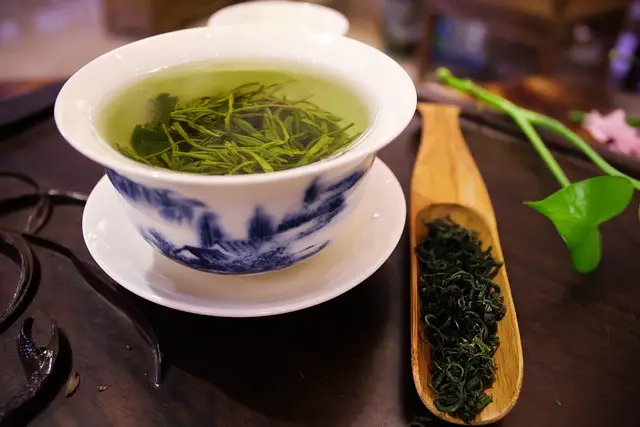
No, drinking tea does not lower blood pressure levels immediately. Scientific research shows that once participants drink green tea, there is an acute increase in systolic and diastolic blood pressure in the first 30 minutes of green tea consumption. One hour after consumption, the changes in blood pressure are insignificant.
Drinking green tea or any green tea extract can take four weeks to three months to lower blood pressure levels depending on the amount of green tea being consumed. According to the results from a meta-analysis of randomized controlled trials, green and black tea can help with hypertension.
How Fast Does Green Tea Lower Blood Pressure
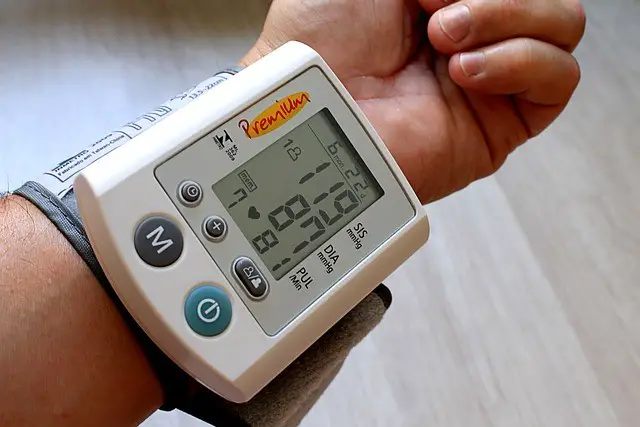
As mentioned above, the blood pressure-lowering effects of green tea are not immediate. Population research was done on Chinese people with a tea intake of 120 mL/day or more for at least a year. Individuals with a habitual tea intake of 120-599 mL/d had 46% less chance of developing hypertension compared to non-habitual drinkers.
Those who had a tea intake of above 600 mL/d were 65% less likely to develop high blood pressure even after adjusting the risk factors of high blood pressure like age and dietary habits. Drinking green tea or oolong tea daily can be good for your cardiovascular health.
Another study was done to examine the effects of green tea extract on blood pressure, inflammatory biomarkers, oxidative stress, and insulin resistance in obese patients. The participants were given either 379 mg of green tea extracts or a matching placebo for 3 months.
The results showed a decrease in the systolic and diastolic numbers in the group on green tea extracts. In addition, there was a decrease in fasting serum glucose, insulin levels, and insulin resistance. There was a significant increase in the total antioxidant status. Green tea intake also led to lower levels of low-density lipoprotein cholesterol and triglycerides and increased high-density lipoprotein cholesterol.
Many randomized controlled trials done to examine the effects of drinking green teas on blood pressure show that daily dietary supplementation with green tea extract daily for 3 months or consuming green tea thrice a day for 4 weeks has been associated with reduced blood pressure and lower risk of CVD. These amounts can reduce the systolic and diastolic numbers by 3.2 mmHg and 3.4 mmHg respectively.
Which Green Tea is Best for High Blood Pressure?
Is green tea good for blood pressure? Yes! However, to know the best green tea for high blood pressure, you must know the varieties of green tea available and their caffeine content. The caffeine content in green tea is affected by the method of processing, the way the tea is brewed, the part of the plant used, and how the tea is grown.
Varieties of Green Tea and Caffeine Content
Brewing for shorter periods and using not-too-hot water yields moderate levels of caffeine. Using hotter water and steeping leaves for longer will make your tea bitter and increase the caffeine content in your green tea.
Green tea varieties made from stems of the Camellia sinensis contain less caffeine than green tea from green tea leaves and buds. Green tea leaves and buds contain the most caffeine.
If you grow your Camelia sinensis in the shade it is more likely to retain more caffeine. Shaded trees produce green tea with high caffeine content. Most Japanese green tea trees are grown shaded so they may contain high caffeine content.
There are two methods involved in processing green tea leaves after harvesting, which are steaming and pan-frying. Chinese green tea is usually pan-fried and contains less caffeine content compared to Japanese green tea with higher caffeine content and intense flavor.
Now let’s talk varieties and caffeine content per 8 0z cup:
- Matcha: 60-70 mg
- Gyokuro: 35-50 mg
- Sencha: 30-4- mg
- Kukicha: 10-15 mg
- Decaf Sencha: less than 5 mg
- Dragonwell: 25-50 mg
- Bancha: less than 10 mg
When trying to manage blood pressure, drink green tea of the Bancha, Kukicha, or Decaf Sencha varieties over Sencha, Gyokuro, and Macha that fall under caffeinated green tea. If your blood pressure is sensitive to caffeine, decaffeinated green tea is better for you.
Caffeinated green tea consumption may raise your blood pressure and increases your risk of cardiovascular disease.
Does Green Tea Interfere with Blood Pressure Medications?
We have answered, is green tea good for blood pressure, but we are yet to discuss the effects of green tea consumption on your hypertension drugs. Studies have shown that although green tea intake can lower high blood pressure, it can reduce the effectiveness of high blood pressure drugs.
One study found that nadolol was less effective after green tea consumption. The study investigated the effects of green tea extract and EGCG on the pharmacokinetics of nadolol. Results show a marked reduction in maximum concentration and area under the time-plasma concentration curve of nadolol by 85% and 74% respectively.
There was a significant reduction in amounts of nadolol excreted in the urine in the group pretreated with green tea extract and EGCG. The catechins in green tea may inhibit intestinal absorption of nadolol meditated by uptake transporters.
Green tea consumption should be avoided when a patient is on Nadolol. Since green tea and black tea have almost similar plant chemicals, it may be wise to reduce the tea intake of this drug. Dietary supplementation with green tea extracts should be avoided as well.
Here are some other drugs that could be affected by green tea polyphenols and green tea catechins. Do not make a habit of green tea consumption if you are on these drugs without speaking to your health care provider.
- Adenosine is given for irregular or unstable heart rhythms.
- Beta-lactam antibiotics: green tea reduces their effectiveness by increasing bacterial resistance to treatment.
- Benzodiazepines are used to treat anxiety and caffeine in green tea may reduce the sedative effects of these medications.
- Blood thinning medications like warfarin. Green tea is rich in vitamin K which can render these medications ineffective. Green tea can also prevent platelets from clotting so it is not advisable to combine it with aspirin since it will increase your risk of bleeding.
- Beta-blockers, propranolol, and metoprolol are meds used to treat high blood pressure and cardiovascular disease. Studies have shown drinking caffeinated beverages with these drugs may increase blood pressure.
- Oral contraceptives
- Monoamine Oxidase Inhibitors (MOIs) are drugs used to treat depression. Green tea consumption with MOIs may lead to a hypertensive crisis.
Which Tea Is Good for High Blood Pressure?
Some studies have shown that excess consumption of tea and other caffeine-rich drinks elevates blood pressure levels. Many of us have been asked to reduce caffeine intake to lower blood pressure. We already know the answer to this, is green tea good for blood pressure, but which other tea is good for high blood pressure?
Chamomile Tea
Stress and anxiety can cause a temporary rise in blood pressure levels. Chamomile tea indirectly lowers blood pressure. It reduces levels of stress and anxiety in individuals with chronic conditions, improving cognitive function and mood.
In diabetics, chamomile tea may lower blood sugar levels reducing damage to blood vessels that leads to high blood pressure.
Oolong Tea
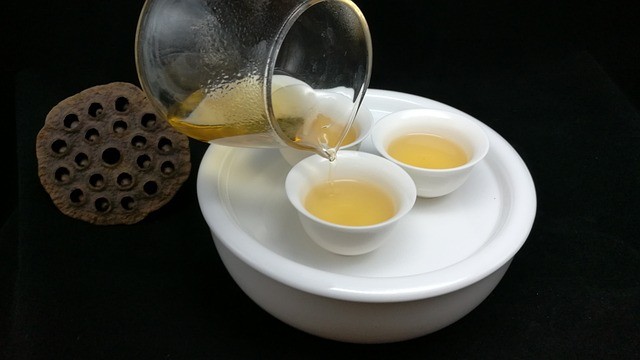
Although more research is needed to investigate how oolong tea can lower blood pressure, some research has shown this tea consumption can have health benefits for cardiovascular disease patients.
A clinical trial showed a decrease in low-density lipoprotein (LDL) cholesterol, and increased plasma adiponectin levels and HDL cholesterol in type 2 diabetes and coronary artery disease (CAD) patients. Other clinical trials reported that oolong tea consumption was associated with reduced odds of dyslipidemia and lower blood total cholesterol.
Flavonoids in oolong tea also lower blood sugar levels and reduce insulin resistance which are risk factors for obesity and diabetes, both cardiovascular risk factors. Oolong tea contains tea polyphenols like EGCG and theaflavins which are antioxidants that could reverse neurodegenerative disease pathophysiology.
Hibiscus Tea
Hibiscus tea is also labeled as one of the “power” tea thanks to its numerous health benefits. It contains antioxidants that protect against inflammation and oxidative stress. In addition, hibiscus tea consumption leads to a significant reduction in blood pressure, weight, and cholesterol.
A controlled clinical trial on pre-and mildly hypertensive adults not taking anti-hypertensive medication and drinking hibiscus tea showed that hibiscus tea consumption reduced blood pressure, with a greater response to hibiscus treatment on systolic blood pressure and less impact on diastolic blood pressure.
Hibiscus can reduce blood pressure because it contains the flavonoids delphinidin-3-sumbubioside and cyanidine-3-sumbubioside. It also contains phytochemicals, diuretics, and angiotensin-converting inhibitors that contributed to reduced blood pressure and reduced risk of cardiovascular disease.
Black Tea
A randomized controlled trial on healthy adults who were regular black tea consumers reported lower systolic blood pressure and diastolic blood pressure levels. A meta-analysis of the effects of black tea on endothelial dysfunction concluded that moderate tea intake significantly enhanced endothelium-dependent vasodilation, promoting endothelial function.
Another mechanism that black tea uses to lower blood pressure is the effects of black tea flavonoids on body weight and visceral fatness. Randomized controlled trials have shown that black tea consumption improves cardiovascular health. A randomized controlled trial on normal and obese adults showed that black tea consumption inhibited weight gain, reduced waist circumference and waist-to-hip ratio, improving body weight and body mass distribution.
Who Should Not Drink Green Tea?
Some individuals should not drink green tea or drink green tea in large amounts. These people include:
Pregnant and Lactating Mothers
Consumption of green tea in high doses during pregnancy is linked to miscarriages. High caffeine content is associated with homocysteine-increasing effects in caffeinated green tea.
A study in Japan on the effect of green tea on serum folate levels in pregnant women and children showed that a high intake of caffeine affected the bioavailability of folic acids and reduce serum folic acid levels.
This effect of green tea on folic acid increases the risk of birth defects in children due to folic acid deficiency. If you’re breastfeeding minimize the amount of green tea you consume to one or two cups a day. Caffeine in breast milk can cause irritability, sleep problems, and issues with bowel activity in breastfed infants.
Bleeding Disorder
If you have a bleeding disorder, avoid drinking green tea. The caffeine content in green tea can worsen your bleeding.
Diarrhea
Green tea has laxative properties, and an increased green tea intake can cause or worsen diarrhea. High intake of caffeine can also lead to stomach pain and discomfort.
Anaemia
When you suffer from anemia, avoid drinking green tea. Compounds in green tea bind with iron reducing its antioxidant properties and absorption of iron. Anemic patients suffer from decreased hemoglobin levels. Iron is needed for hemoglobin production. Reduction in iron absorption worsens anemia, that’s why you shouldn’t drink green tea.
Eating Disorders
Individuals with anorexia or bulimia nervosa struggle with food intake. Green tea promotes fat burning and suppresses appetite lowering body mass index (BMI). Anorexia and bulimia lead to being underweight which triggers other health concerns. People with these two eating disorders should not drink green tea because their body mass index is below normal, and further loss is undesirable.
Heart Condition
Although we said yes to is green tea good for blood pressure, in large amounts, it may cause more problems for people with heart problems. High amounts of caffeine cause irregular heartbeats and increase heart rate.
In addition, the effect of green tea on the absorption of Atorvastatin (Lipitor) is another reason to reduce the consumption of green tea in people with cardiovascular disease. Atorvastatin is a medication given to prevent heart disease and other cardiovascular problems and in the treatment of abnormal lipid profiles. Do not take this medication with green tea or green tea extract because it reduces its absorption in the body.
Seizures
When on seizure medications or having seizures, reduce consumption of green tea extract and green tea. Caffeine worsens seizures and reduces the potency of anti-seizure medication.
Osteoporosis
The elderly should not drink more than 6 cups of green tea in a day. My recommendation would be 3 cups if you drink green tea daily. Green tea consumption increases the amount of calcium excretion in your urine. Calcium is needed in building, maintaining, and strengthening bones. If you consume green tea and you are not getting enough calcium from your diet, you increase your risk of developing or worsening osteoporosis.
Can I drink Green Tea If I have Low Blood Pressure?
Caffeinated green tea has a high caffeine content which can raise blood pressure temporarily and increase heart rate. These effects of green tea are temporary and will subside after an hour. Green tea has blood pressure-lowering properties so may not be suitable for individuals with low blood pressure.
You can use green tea to increase your blood pressure immediately but don’t be a regular consumer. Since these blood pressure-raising effects are temporary you are better off sticking to your medication, using more salt, and staying hydrated. Limit your intake of green tea if your blood pressure is low.
Is Lipton Green Tea Good for High Blood Pressure?
Lipton green tea’s benefits are attributed to the catechins and polyphenols of green tea leaves. Green tea leaves help with weight loss, anti-oxidation and anti-inflammation, blood sugar control, protection against cardiovascular disease, and boosting cognitive and mental function. They contain flavonoids that reduce your risk of developing chronic disease.
When purchasing Lipton tea, go for the loose tea leaves over the tea bags. Consumption of 4 cups of Lipton tea made from loose green tea leaves reduces risks of stroke, heart failure, and heart disease. The phytochemicals in green tea relax blood vessels and increase widening, reducing resistance on arterial walls.
Lipton tea lowers LDL (bad) cholesterol and total cholesterol but has no significant effects on HDL cholesterol. This helps prevent the hardening of arteries preventing the development of arteriosclerosis.
Lipton green tea has a low caffeine content of 28-38 mg, which is a good amount for high blood pressure patients.
Is Ginger Good for High Blood Pressure?
Ginger can be a good addition to improving your cardiovascular health. It has been used for regulating blood pressure and cholesterol levels. Consuming ginger can lower your risk of CVD by acting as a natural ACE inhibitor and calcium channel blocker. These are medications used for hypertension.
A cross-sectional study done to evaluate the benefits of daily consumption of ginger on the prevention of chronic diseases showed that consuming 2-4 g of ginger per day lowered the risk of CVD and hypertension.
What Food Reduces Blood Pressure?
As a health coach, I always advocate for variety in the diet. Eating healthy doesn’t have to be boring making you fall back into old habits. I may have given you green tea as an option to help you naturally lower your blood pressure, but can a man leave on green tea alone? What if tea is not your jam?
No need to worry, I am the king of diversity! Here’s a list of foods you can consume to lower your blood pressure if tea just doesn’t float your boat. And these options are keto (remember the relevance of keto to blood pressure?).
Berries
Berries contain flavonoids which are antioxidants with scavenging properties against reactive oxygen species. Blackberries contain the highest amounts of flavonoids making them powerful herbal medicine against hypertension. Other berries like strawberries and raspberries are also good options for lowering blood pressure.
A study on hypertensive women to investigate the habitual intake of flavonoids predominantly in blueberries and strawberries suggests that consumption of berries (blueberries and strawberries) lowered the risk of developing hypertension by 8% and by 12% in adults above 60 years.
You can enjoy your berries as a snack or add them to a smoothie to get the blood-lowering benefits they have to offer!
Leafy Low-starch Vegetables
Green leafy vegetables are high in potassium and nitrates which play a significant role in lowering blood pressure levels. Choosing the low-starchy variety will help your body achieve and maintain ketosis while providing you with essential nutrients necessary for lowering your blood pressure.
A study to determine the impact of vegetable nitrate intake on cardiovascular disease reported higher vegetable nitrate intake was associated with improved blood pressure. Consumption of vegetables regulated systolic blood pressure more in individuals consuming alcohol than those who do not.
Low-starch vegetables are the body’s major dietary nitrate source and consumption reduces risks of developing atherosclerosis, heart failure, ischemic shock, and ischemic heart disease (IHD).
Fermented Foods
Kimchi, plain Greek yogurt, and certain cheeses like cheddar cheese and feta cheese, and sauerkraut are all fermented foods allowed when eating keto. The probiotics in fermented foods promote gut health by balancing the gut microbiome.
A longitudinal study in Maine to investigate the association of yogurt intake to hypertension evidence suggests that higher intake of yogurt reduced systolic and diastolic blood pressure. This is assumed to be because yogurt contains calcium, magnesium, and potassium, all essential nutrients in regulating blood pressure.
Moreover, probiotics aid in the production of enzymes that regulate the release of anti-hypertensive peptides further lowering blood pressure.
You need to regularly consume fermented foods to experience and maintain the changes in your blood pressure. There is the option of probiotic supplementation if you don’t think you’re getting enough from your diet.
Nuts
Nuts include pecans, walnuts, almonds, Brazil nuts, macadamia nuts, cashew nuts, and pistachios. Eating nuts reduce the risks of developing Non-alcoholic fatty liver disease and helps with weight maintenance.
Nuts are a rich source of L-arginine that can lower blood pressure. A review on pistachio nuts stated that the high-fat content in these nuts was associated with increased satiety levels and weight management. Pistachios’ high energy density, fiber content, and unsaturated fatty acids induced satiety which lowered food intake reducing risks of weight gain and obesity.
These nuts also improve total cholesterol concentration, decreasing LDL cholesterol levels and boosting HDL cholesterol. This change in lipid profile is what gives nuts their protective cardiovascular disease role.
When picking your nuts, reach out for the unsalted kind over the salted varieties. The high sodium content in salted nuts may increase your risk of developing cardiovascular disease. How can you incorporate nuts into your keto diet? Blend them in smoothies, snack on them, add them to your salad or you can make them the star of your dish!
Lemons and Lime
It is not always about the sweet tooth, here is something for people with a sour tooth! King of variety, remember? One lemon fruit contains 4g of net carbs, which makes it keto-friendly. Lemons are rich in vitamin C which is essential for boosting your immunity.
They also contain hesperidin, an antioxidant that can reduce the risks of developing heart disease. This antioxidant is present in other citrus fruits like oranges, grapefruit, and mandarin which are not allowed on keto because of their high sugar content.
Many studies focus on the consumption of orange juice in the management of high blood pressure. This is because you cannot drink the same amount of lemon juice that you would have in orange juice. But it is believed that the same amounts of lemon and lime juice would have similar blood-lowering effects as orange juice does.
Incorporating lemons into your keto diet like in this study, could help you lower blood pressure, increase the concentration of HDL cholesterol and reduce oxidative damage in tissue cells. You can also squeeze lemon juice and add lemon slices to your drinking water. Squeeze lemon juice on your salads for flavor over adding salt. This reduces the sodium content you consume and increases the amount of hesperidin you take.
Final Thoughts
Is green tea good for blood pressure? Yes, thanks to its polyphenols and catechins. Whether you are consuming green tea or green tea extract, the amounts you take matter a great deal. Green tea is also a good addition to your keto diet because it has zero sugar.
I am curious, are you a fan of green tea? Which is your favorite variety of green tea? Why do you take green tea? If it is to manage your high blood pressure, what is your experience so far? Would you recommend it to other hypertensive patients? The comment section is open, drop your response down below!
